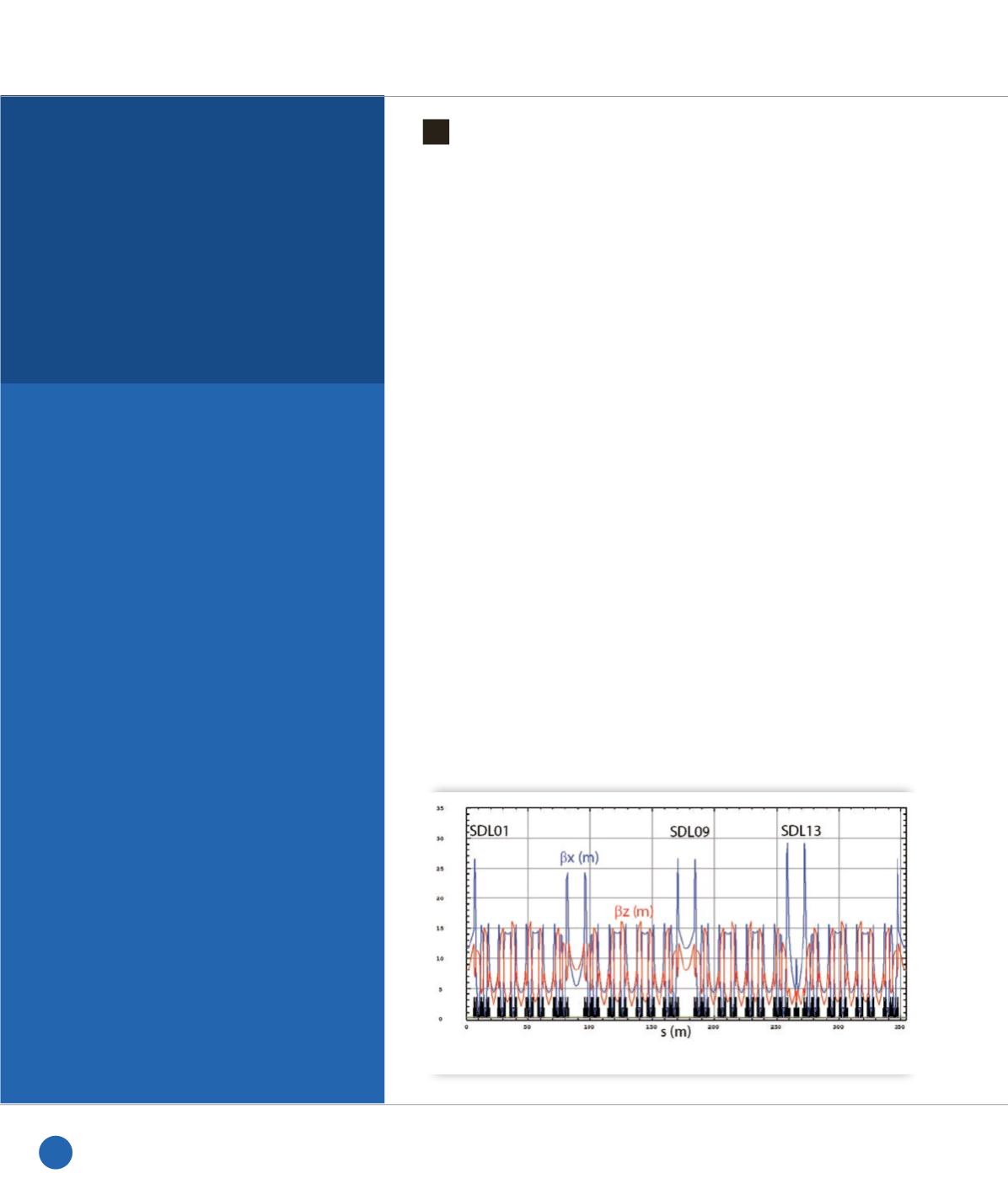
News on the storage
ring optics: operation
performance improvement
One year ago, the SOLEIL storage ring
optics went through the most significant
upgrade since its commissioning in 2006.
The four-fold symmetry of the storage ring
was broken in order to incorporate the new
focusing optics for the two long beamlines
ANATOMIX/Nanoscopium taken their photon
beams from canted insertion devices hosted
in a long straight section. Besides these
major modifications, the year 2013 was an
opportunity to tune even further more the
optics (quadrupole and sextupole magnets)
in order to make the operation of the light
source less sensitive to the configurations
of the insertion devices freely controlled
by users and to the settings of the skew
quadrupoles used to correct and maintain
the coupling between the horizontal and
vertical plane. Significant performance
improvement (injection efficiency and
lifetime) and ease of operation were
successfully reached.
During the year 2011, a new storage ring
optics was commissioned. The optical
functions were significantly 2011 with
the addition of a quadrupole triplet in
the middle of one long straight section
(SDL13). This is the so-called ANATOMIX-
Nanoscopium optics creating a double
minimum of the vertical beta function in
order to focus the electron beam in the
center of both canted insertion devices
(ID) [1]. Since the beginning of 2012, the
storage ring was operated daily in this
configuration with good performances.
Nevertheless, this new optics is not
trivial since the four-fold symmetry of
the storage ring lattice is broken and
the machine performance (the injection
efficiency and beam lifetime strongly
linked to non-linear beam dynamics) is still
sensitive to the increasing number of IDs.
A second important point was to improve
the too high sensitivity of the optics to the
betatron coupling. This latter is minimized
using special correctors, namely the skew
quadrupole correctors. A large drop of the
injection efficiency was observed, to a
value close to or even below the radiation
safety threshold, when these skew
correctors were turned off. This could
jeopardize the Top-up operation in case
of a skew corrector failure. In addition,
the machine was suffering from electron
losses mainly localized in the SDC15 short
straight section due to lifetime losses
when particles get scattered and change
their energies by a few percent, as well
as during beam losses when the beam is
interrupted by the machine interlock or the
personal safety systems. In both cases,
large off-momentum non-linear dynamics
is involved (enhanced by the broken
symmetry) and is coupled to a specific
horizontal physical aperture reduction in
the inner side of SDC15.
A second iteration of optics optimization
was then undergone during the year
2013 in order to reduce this machine
sensitivity. The first step was to increase
the horizontal beta function in the injection
long straight section (SDL01) from 5 to 11
m keeping the rest of the lattice as well
as the beamline source point dimensions
unchanged (Figure
➊
). This increase
mechanically enlarged the dynamic
aperture at the injection amplitude
by pushing away dangerous resonances
(from Figures
➋
to
➌
). The result was a
substantial gain for the injection efficiency
in presence of the IDs, relaxing the critical
betatron coupling dependence. The
injection efficiency is now affected by
less than 10% for any ID configurations.
However, the electron losses were still
important in SDC15.
To cope with this point, as a second step,
the horizontal beta function in the opposite
free long straight section (SDL09) was
also increased from 5 to 11 m without
➊
SOLEIL storage ring optical functions.
SOURCES AND ACCELERATORS DIVISION
136
SOLEIL
HIGHLIGHTS
2013


